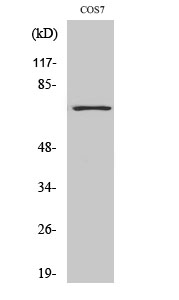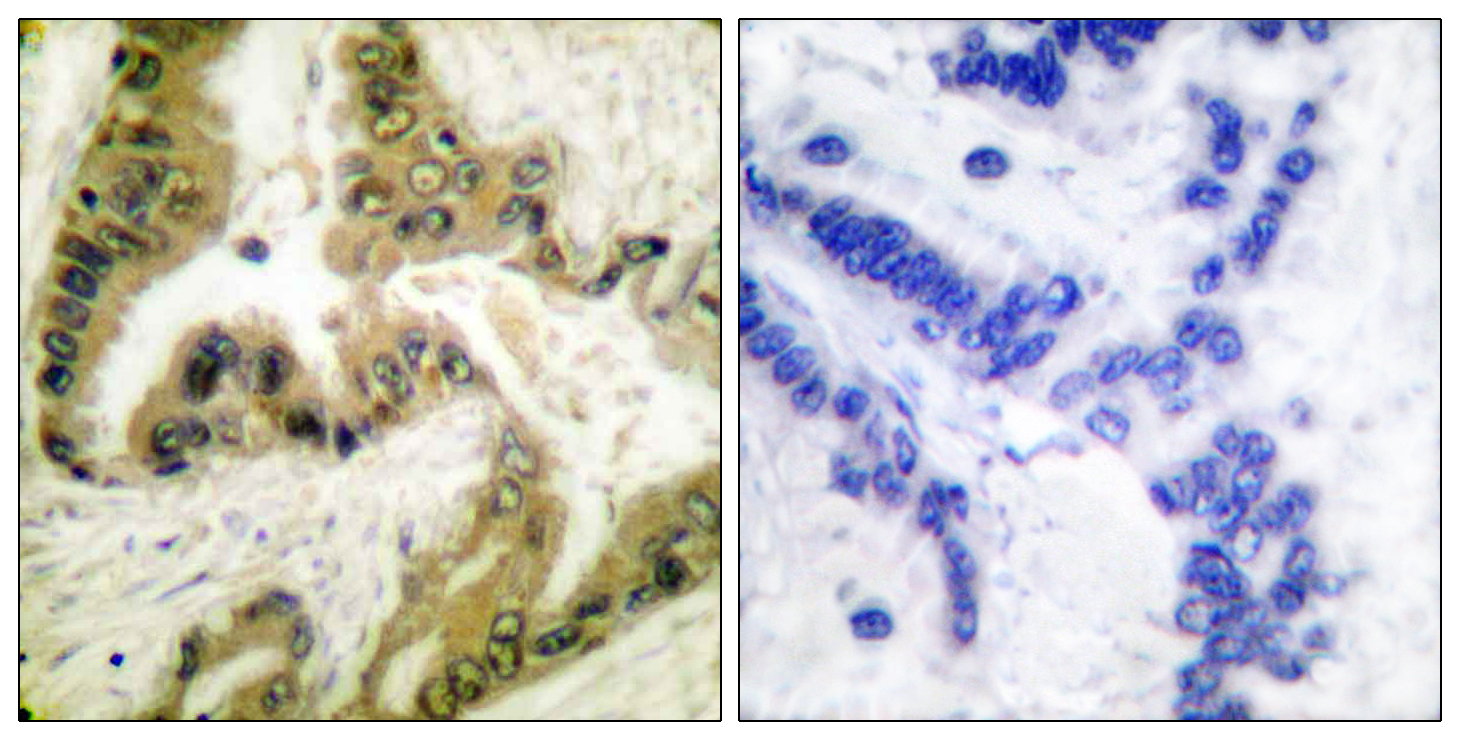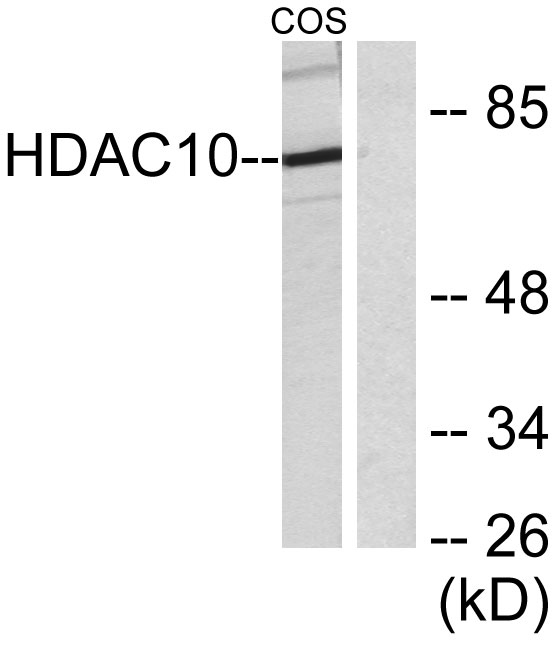Histone deacetylase 10 Polyclonal Antibody
- Catalog No.:YT2146
- Applications:WB;IHC;IF;ELISA
- Reactivity:Human;Mouse;Rat;Monkey
- Target:
- Histone deacetylase 10
- Fields:
- >>Neutrophil extracellular trap formation;>>Alcoholism;>>Viral carcinogenesis
- Gene Name:
- HDAC10
- Protein Name:
- Histone deacetylase 10
- Human Gene Id:
- 83933
- Human Swiss Prot No:
- Q969S8
- Mouse Gene Id:
- 170787
- Mouse Swiss Prot No:
- Q6P3E7
- Rat Gene Id:
- 362981
- Rat Swiss Prot No:
- Q569C4
- Immunogen:
- The antiserum was produced against synthesized peptide derived from human HDAC10. AA range:10-59
- Specificity:
- Histone deacetylase 10 Polyclonal Antibody detects endogenous levels of Histone deacetylase 10 protein.
- Formulation:
- Liquid in PBS containing 50% glycerol, 0.5% BSA and 0.02% sodium azide.
- Source:
- Polyclonal, Rabbit,IgG
- Dilution:
- WB 1:500 - 1:2000. IHC 1:100 - 1:300. ELISA: 1:10000.. IF 1:50-200
- Purification:
- The antibody was affinity-purified from rabbit antiserum by affinity-chromatography using epitope-specific immunogen.
- Concentration:
- 1 mg/ml
- Storage Stability:
- -15°C to -25°C/1 year(Do not lower than -25°C)
- Other Name:
- HDAC10;Histone deacetylase 10;HD10
- Observed Band(KD):
- 75kD
- Background:
- The protein encoded by this gene belongs to the histone deacetylase family, members of which deacetylate lysine residues on the N-terminal part of the core histones. Histone deacetylation modulates chromatin structure, and plays an important role in transcriptional regulation, cell cycle progression, and developmental events. Alternatively spliced transcript variants encoding different isoforms have been found for this gene. [provided by RefSeq, Aug 2011],
- Function:
- catalytic activity:Hydrolysis of an N(6)-acetyl-lysine residue of a histone to yield a deacetylated histone.,function:Responsible for the deacetylation of lysine residues on the N-terminal part of the core histones (H2A, H2B, H3 and H4). Histone deacetylation gives a tag for epigenetic repression and plays an important role in transcriptional regulation, cell cycle progression and developmental events. Histone deacetylases act via the formation of large multiprotein complexes.,similarity:Belongs to the histone deacetylase family. Type 2 subfamily.,subcellular location:Excluded from the nucleoli.,subunit:Interacts with HDAC2, HDAC3 and NCOR2.,tissue specificity:Ubiquitous. High expression in liver, spleen, pancreas and kidney.,
- Subcellular Location:
- Cytoplasm . Nucleus . Excluded from nucleoli. .
- Expression:
- Widely expressed with high levels in liver and kidney.
- June 19-2018
- WESTERN IMMUNOBLOTTING PROTOCOL
- June 19-2018
- IMMUNOHISTOCHEMISTRY-PARAFFIN PROTOCOL
- June 19-2018
- IMMUNOFLUORESCENCE PROTOCOL
- September 08-2020
- FLOW-CYTOMEYRT-PROTOCOL
- May 20-2022
- Cell-Based ELISA│解您多样本WB检测之困扰
- July 13-2018
- CELL-BASED-ELISA-PROTOCOL-FOR-ACETYL-PROTEIN
- July 13-2018
- CELL-BASED-ELISA-PROTOCOL-FOR-PHOSPHO-PROTEIN
- July 13-2018
- Antibody-FAQs
- Products Images

- Western Blot analysis of various cells using Histone deacetylase 10 Polyclonal Antibody diluted at 1:1000

- Immunohistochemistry analysis of paraffin-embedded human lung carcinoma tissue, using HDAC10 Antibody. The picture on the right is blocked with the synthesized peptide.

- Western blot analysis of lysates from COS7 cells, using HDAC10 Antibody. The lane on the right is blocked with the synthesized peptide.



